Iron: What you Need to Know

I am currently taking a Micronutrients class and it is SO interesting!
FYI – Macronutrients are carbohydrates, fat, protein, and water. You need a LOT of these nutrients each day. Micronutrients are all of the vitamins and minerals. You need SMALL amounts of these nutrients each day.
My goal is to condense and share the plethora of information I am learning so that you can understand it and apply it to your life – and believe me, this stuff is fascinating and EXTREMELY relevant!
I am starting with Iron because I have personally dealt with iron deficiency throughout most of my life.
It is also the most common and widespread nutrient deficiency in the world. (WHO, 2018) Read more: http://www.who.int/nutrition/topics/ida/en/
Functions of Iron:
- Iron stores and transports oxygen throughout your body. All parts of your body (cells, muscles, brain) require a constant supply of oxygen to carry out their functions.
- Oxygen transport: Iron is a component of hemoglobin, which is the main protein in red blood cells. Hemoglobin picks up oxygen from your lungs and carries it through your blood to all body tissues (Fry, 2017).
- Oxygen storage: Iron is also a component of the protein myoglobin, which transports oxygen specifically to muscle cells and facilitates short-term storage in muscles. (Super important if you are exercising!)
- Energy: Iron is a critical component of the electron transport chain in the mitochondria of your cells. This means that it enables your cells to produce energy from the food you eat.
Sources of Iron:
- Heme Iron – found in animal foods (red meat, sardines, liver, eggs, tuna, oysters, poultry)
- Heme iron is much more bioavailable, meaning that your intestines will absorb more iron from these foods. To be exact, 15-35% of heme iron will be assimilated from iron-containing animal foods, as compared to 2-20% from non-heme iron (Ross, Caballero, Cousins, Tucker, & Ziegler, 2014)
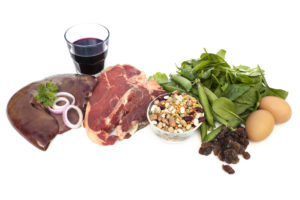
- Non-heme Iron – found in plant foods (beans, soybeans, chocolate, lentils, tahini, blackstrap molasses, spinach)
- Non-heme iron is not well absorbed because several chemicals/factors interfere with intestinal absorption.
- Phytates (chemical on exterior of beans, rice, nuts)
- Polyphenols (in red wine)
- Oxalic acid (compound in spinach)
- Soy (limits absorption of non-heme iron and also contains phytates)
- Non-heme iron is not well absorbed because several chemicals/factors interfere with intestinal absorption.
- Fortified foods – many cereals and processed foods do contain substantial levels of added non-heme iron
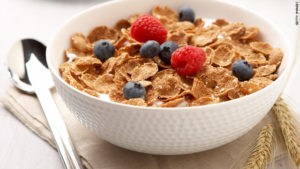
Strategies to Maximize Dietary Absorption:
- Vitamin C!!!! The single most effective thing you can do is to consume vitamin C along with non-heme iron to increase absorption.
- Add red peppers, citrus fruits (oranges, lemons), kiwi, strawberries
- Save the red wine (with otherwise healthy polyphenols) for an hour after dinner
- Meat, Fish, Poultry (MFP factor) – simply adding even a small quantity of these items to foods containing non-heme iron will enhance absorption. This is likely due to the amino acid, cyestine in these animal foods. (Think of a soup with even little bits of meat.)
- Eat a combination of both heme and non-heme iron.
- Soak your beans and grains in water for a few hours before cooking to remove the phytates. More about this in a future blog post!
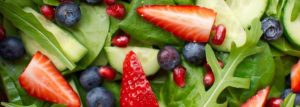
Nutrient Interactions with Iron:
- Vitamin E – interferes with iron absorption, so take these nutrients separately
- Manganese – inhibits iron absorption, and iron limits manganese absorption
- Zinc – high doses of iron with supplemental zinc can limit zinc absorption
- Calcium – decreases absorption of both heme and non-heme iron, so take calcium supplements away from iron supplements or an iron-rich meal
- ***Copper – required for iron absorption, so pair these together!
- ***Vitamin A – works synergistically with iron, so pair these together!
Signs of Iron Deficiency:
- Fatigue
- Increased heart rate
- Palpitations
- Impaired exercise tolerance and work capacity
- Glossitis (sore, red tongue)
- Spoon nails
- Angular stomatitis (sores at the corner of the mouth)
- Atrophy of taste buds
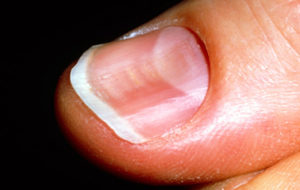
At Risk for Iron Deficiency:
- 6-month to 4-year olds, due to rapid growth
- Adolescents – due to rapid growth
- Pregnancy – due to increased blood requirements
- Chronic blood loss – women with heavy menstrual periods, hemorrhoidal bleeding, GI ulcers, frequent blood donors
- Celiac disease – due to damaged intestinal villi inhibiting absorption
- Gastric bypass surgery
- Vegetarians – due to decreased absorptive capacity of non-heme iron
- Athletes – may need up to 30% more iron due to increased physical stress, sweat excretions, and energy (Fry, 2017)
- **Female athletes who are menstruating may need up to 50% more iron.

Iron Regulation: (this is fascinating!)
The body has no way of excreting excess iron, unlike many other nutrients which are excreted by the kidneys. Instead, as the body’s iron reserves fill up, the body automatically absorbs less iron from food. Conversely, if you are iron deficient, your body will automatically absorb a greater percentage of iron in the food you eat.
If you are not deficient in iron, do NOT take supplements. If you do, it could be toxic to your body since your body will be unable to rid itself of the excess. Don’t worry about over-consuming iron from diet – it’s nearly impossible since it is not present in high amounts.

Supplements:
If you are deficient in iron, the best/only way to fix the imbalance is to use supplements. Once iron levels have been restored, you can maintain with an iron-rich diet. (This is because iron is present in such small amounts in food.)
Drug Interactions:
- Medications that lower stomach acid (antacids, proton-pump inhibitors) can impair iron absorption.
- Medicines such as levodopa, levothyroxine, methyldopa, antibiotics (quinolones, tetracycline and penicillamine), bisphosphonates and cholestyramine can decrease iron absorption, so take these medications and iron supplements two hours apart.
Talk to your doctor…
before beginning any iron supplementation. You should have blood tests done before, during and after supplementation to monitor iron levels.
Thank you for taking the time to read through all of this!!
If you have any questions or thoughts, please let me know!! This is the brief version of all I have learned this week.
I would love to chat about this, as it is something I have experienced first-hand (from Flintstones vitamins with Iron in first grade, until iron supplements last month as I trained for a half marathon!)
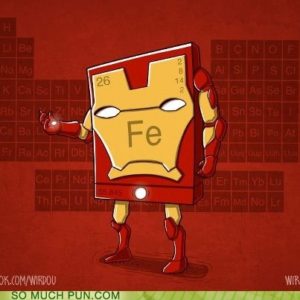
References
Fry, M. (2017). Module 3 Lecture: Iron. [Lecture Notes]. Maryland University of Integrative Health. Retrieved from https://learn.muih.edu/courses/6170/pages/iron?module_item_id=174890
Ross, A. C., Caballero, B. , Cousins, R. J., Tucker, K.L. & Ziegler, T. R. (2014). Modern Nutrition in Health and Disease. (11th ed.). Baltimore, MD: Lippincott, Williams & Wilkins.
World Health Organization (WHO). (2018). Micronutrient deficiencies. Retrieved from http://www.who.int/nutrition/topics/ida/en/
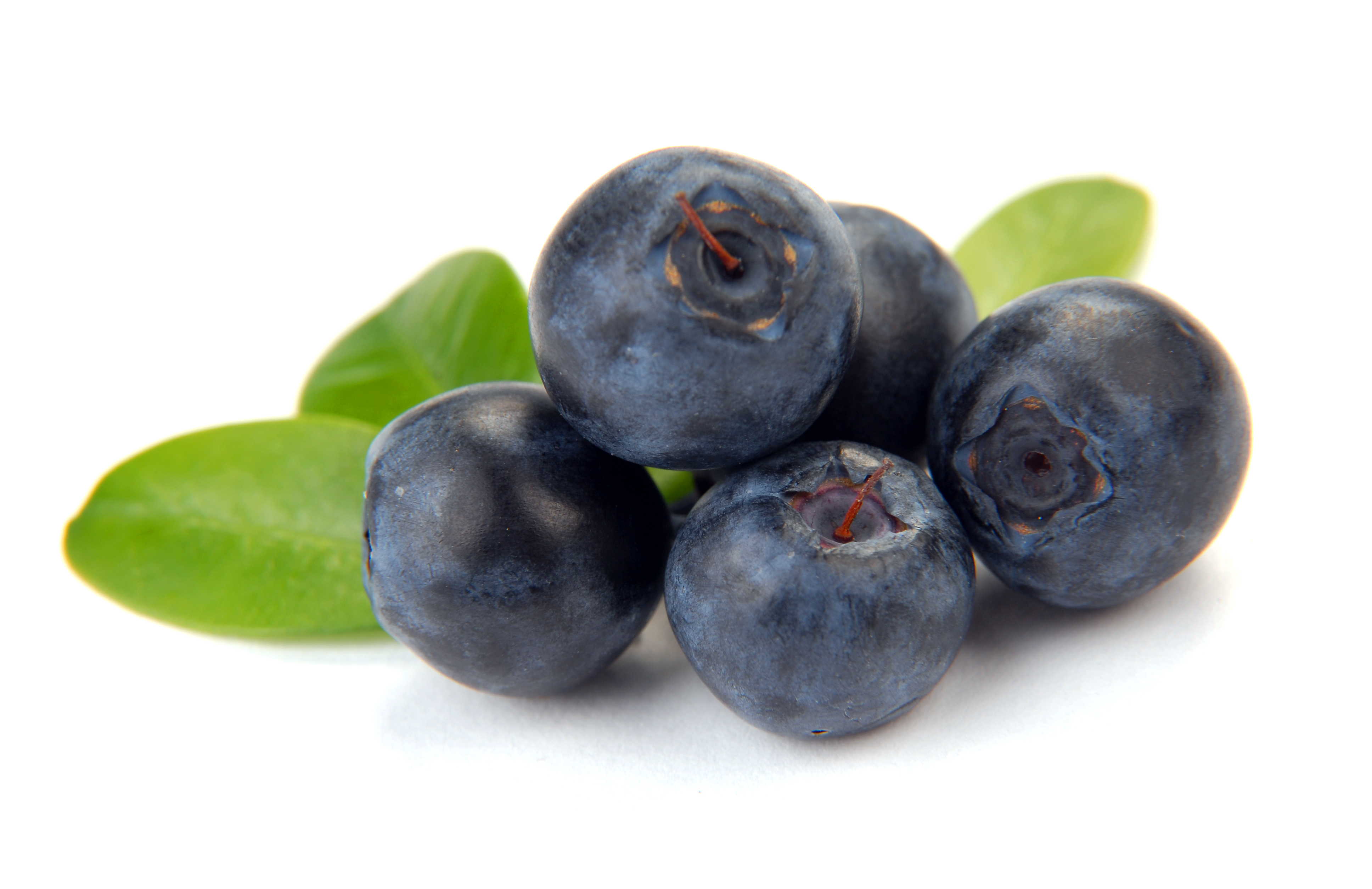
Thank you
I’m glad you enjoyed the post! 🙂